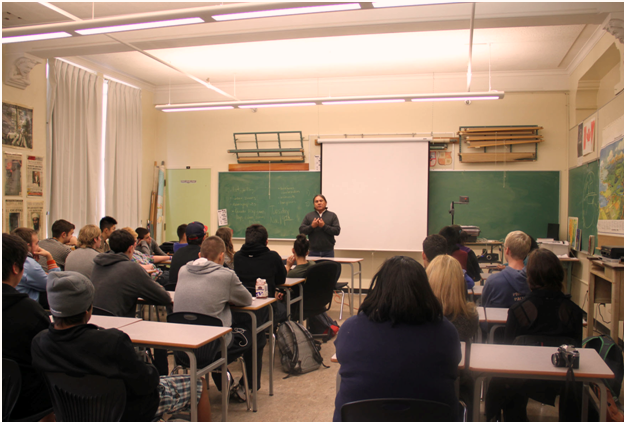In the fast-paced landscape of education, traditional teaching methods may fall short in capturing the attention of today’s tech-savvy and diverse student body. This blog post explores innovative teaching strategies that educators can employ to engage students actively, promote critical thinking, and cultivate a passion for learning.

Understanding Today’s Students
1. Digital Natives and Technology Integration
Recognizing that today’s students are digital natives is crucial. Integrating technology into lessons not only aligns with their familiarity but also enhances engagement. Incorporate multimedia elements, online platforms, and interactive tools to create a dynamic and inclusive learning environment.
2. Diverse Learning Styles
Students today come from diverse backgrounds and have unique learning styles. Innovative teaching involves recognizing and accommodating these differences. Implementing a variety of instructional methods, such as visual aids, hands-on activities, and collaborative projects, ensures that every student has an opportunity to thrive.
3. Short Attention Spans and Active Learning
The era of information overload has led to shorter attention spans. To counter this, incorporate active learning strategies that require students to participate actively. Interactive discussions, problem-solving activities, and real-world applications keep students engaged and focused.
Innovative Teaching Strategies
1. Flipped Classroom Model
Flip the traditional teaching model by delivering instructional content outside of class through videos or online resources, allowing class time for discussions, activities, and personalized assistance. This approach fosters self-paced learning and encourages students to take ownership of their education.
2. Project-Based Learning (PBL)
Engage students in real-world problem-solving through project-based learning. This hands-on approach allows students to apply knowledge, develop critical thinking skills, and collaborate with peers. Projects can range from scientific experiments to creative presentations, providing a holistic learning experience.
3. Gamification in Education
Incorporate elements of game design into lessons to make learning more enjoyable and engaging. Educational games, quizzes, and simulations not only capture students’ interest but also promote healthy competition and a sense of accomplishment, enhancing motivation and retention of information.
4. Student-Centered Learning Environments
Shift the focus from a teacher-centered to a student-centered approach. Create learning environments that encourage exploration, curiosity, and self-discovery. Give students choices in projects, allow for individualized learning paths, and provide opportunities for them to showcase their strengths.
5. Fluent Use of Technology
Leverage technology not just as a supplementary tool but as an integral part of the learning process. Incorporate interactive apps, virtual field trips, and online collaboration platforms. This not only enhances engagement but also prepares students for the digital demands of the 21st century.
6. Microlearning Techniques
Recognizing short attention spans, implement microlearning techniques that deliver content in small, digestible chunks. Break down lessons into shorter segments, use concise multimedia content, and incorporate quick quizzes to reinforce key concepts. This approach accommodates the fast-paced nature of students’ lives.
7. Peer Teaching and Collaboration
Encourage peer-to-peer learning and collaboration. Students often learn effectively from each other, and collaborative projects promote teamwork and communication skills. Platforms for group discussions, shared documents, and virtual collaboration tools facilitate a sense of community within the classroom.
8. Art Integration for Creativity
Incorporate arts into STEM subjects to stimulate creativity and critical thinking. The integration of visual arts, music, or drama into lessons not only provides a holistic learning experience but also caters to varied learning styles, making complex concepts more accessible.
Overcoming Challenges in Implementation
1. Technology Barriers and Accessibility
While technology is a powerful tool, ensuring equal access can be a challenge. Address this by providing alternative options for students without consistent access to technology, promoting inclusivity and fairness in the learning environment.
2. Resistance to Change
Implementing innovative teaching strategies may face resistance from both educators and students accustomed to traditional methods. Professional development programs, open communication, and showcasing successful examples can help overcome this resistance and build a culture of innovation.
3. Assessment and Evaluation Adjustments
Traditional assessment methods may not align with innovative teaching approaches. Rethink evaluation strategies to align with project-based assessments, continuous feedback, and a focus on skills development rather than rote memorization.
Conclusion
Innovative teaching strategies are essential in engaging today’s students, fostering a love for learning, and preparing them for the challenges of the future. By understanding the diverse needs and learning styles of modern students, educators can tailor their approaches to create dynamic, student-centered classrooms. Embracing technology, active learning, and creativity, these strategies not only capture attention but also instill a lifelong passion for knowledge.